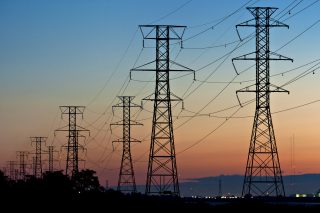Tanzania’s contractors have committed to set up a 400 kilovolt (kV) transmission line alongside other accompanying substations. This development which is line with the Kenya-Tanzania Power Interconnection Project involves the construction of an overhead transmission line from Singida in Tanzania to Isinya in Kenya.
The project commenced in 2016 when Kenya signed an agreement for an interconnector with Tanzania and a contract for an international power supply network which will link East Africa to Southern African countries.
With the completion deadline set for 2020, the project is being implemented by the Tanzania Electric Supply Company (Tanesco) in collaboration with Kenya Electricity Transmission Company (Ketraco).
Kenya also plans to extend its transmission line to Ethiopia, while Tanzania will extend its line to Zambia. This will connect the East African region to the Southern Africa Power Pool (SAPP), where connected countries will be able to buy and sell electricity from each other.
Overview of the project
The Kenya-Tanzania Power Interconnection Project is being implemented under the framework of the East African Power Pool (EAPP). The interconnector project involves the construction of about 510 kilometres of high voltage alternating current (HVAC) transmission line from Kenya to Tanzania, the upgrade of Isinya (Kenya) and Singida (Tanzania) substations as well as the construction of the Arusha substation. Overall, at least five modern sub-stations will be built to ensure smooth power transmission between the two countries.
On Kenya’s side, the project involves the construction of 400kV transmission line from Isinya substation to the Namanga border and the upgrade of the 400/220kV Isinya substation. While for Tanzania has to construct a 400kV transmission line from Namanga border to Singida, the 400kV Arusha substation as well as upgrade the 220/33kV Singida substation.
“The work will be undertaken by Bouygues Energies & Services of France,” Tanesco’s Senior Manager in charge of projects, Emmanuel Manirabona noted, while he also reveals that the first lot will see a line built between Singida and Babati and lot number two will involve the construction of a 400kV transmission line between Babati and Arusha.
The works in Kenya are financed by the government and African Development Bank (AfDB) at a cost of $4.25 million and $22.42 million respectively, while the Tanzanian project costs $258 million and is funded by a loan from AfDB and the Japanese International Cooperation Agency (JICA).
Underlying objectives
The Kenya-Tanzania transmission line is geared towards enabling the East African neighbours to share electricity easily while reducing operational costs of energy production. More so, the project will help both countries replace high-cost thermal energy with cheaper hydropower, thereby reducing greenhouse gas emissions.
“The Kenya- Tanzania interconnection project plays an important role in promoting regional integration through power trade … the power interconnection project is a win-win solution for both Kenya and Tanzania,” Manirabona added.
For Tanzania, the interconnector is part of a grand plan to have 400kV transmission line interconnections with as many countries as possible so that when the Stiegler’s Gorge 2,100 megawatts Hydroelectric Power Station becomes operational in Tanzania, the country can easily sell the surplus power to connected countries.
The Tanzanian government is also considering a 200kV Uganda-Tanzania transmission line to run from Masaka to Mwanza, and interconnections with power grids in Mozambique, Rwanda, Burundi, and Malawi, Manirabona revealed.
Over the years, the demand for power has increased substantially due to population growth across Africa. In order to address this, several initiatives have been introduced among which are regional power pools, to encourage the regional interchange of affordable and stable power.
The East African Power Master Plan (EAPMP) which was developed in 2003 recommended the establishment of a power pool to facilitate electricity trade and joint least cost power development planning in the region.
Thus in 2005, EAPP was formed with the aim of connecting the national electricity grids of over 10 regional member countries, to ensure energy flows from countries with a surplus to those facing a deficit.
In 2012, regional countries began the Eastern Africa Integration Programme whose main aim was to connect the power grids of Ethiopia, Kenya, Tanzania, Uganda, and Rwanda in three phases, among which is the Kenya-Tanzania transmission line under construction.








